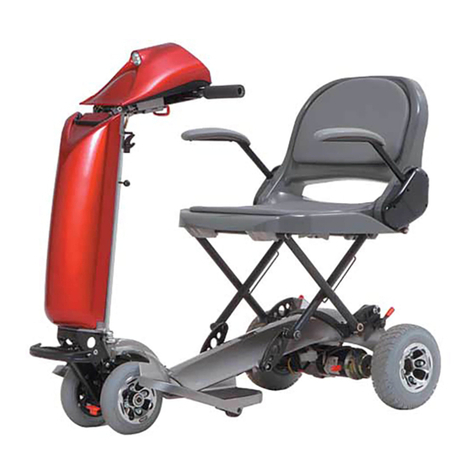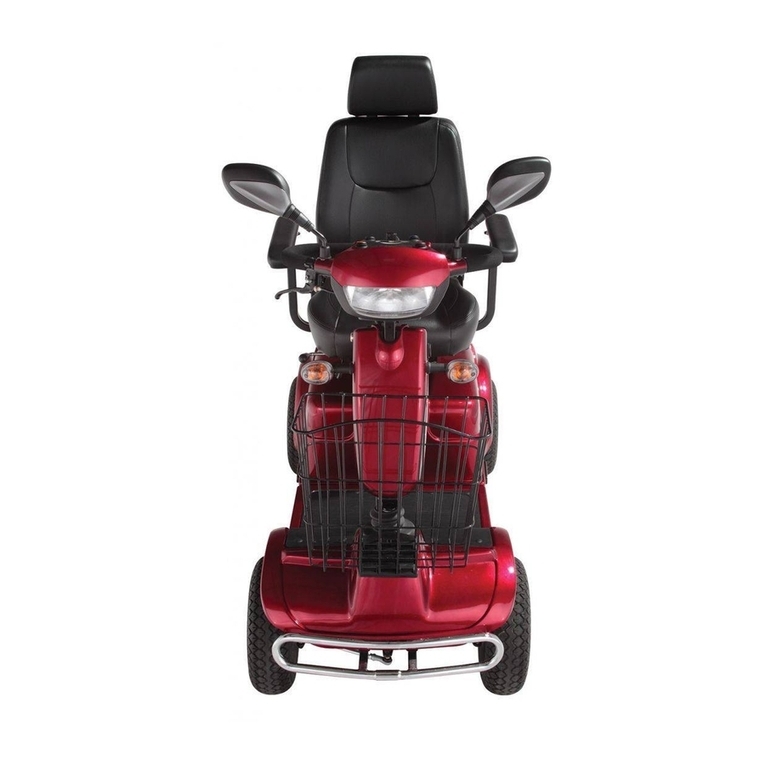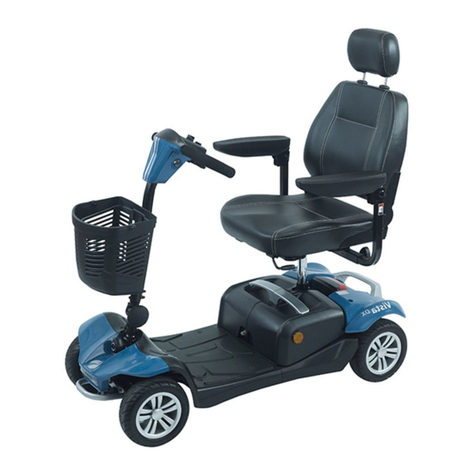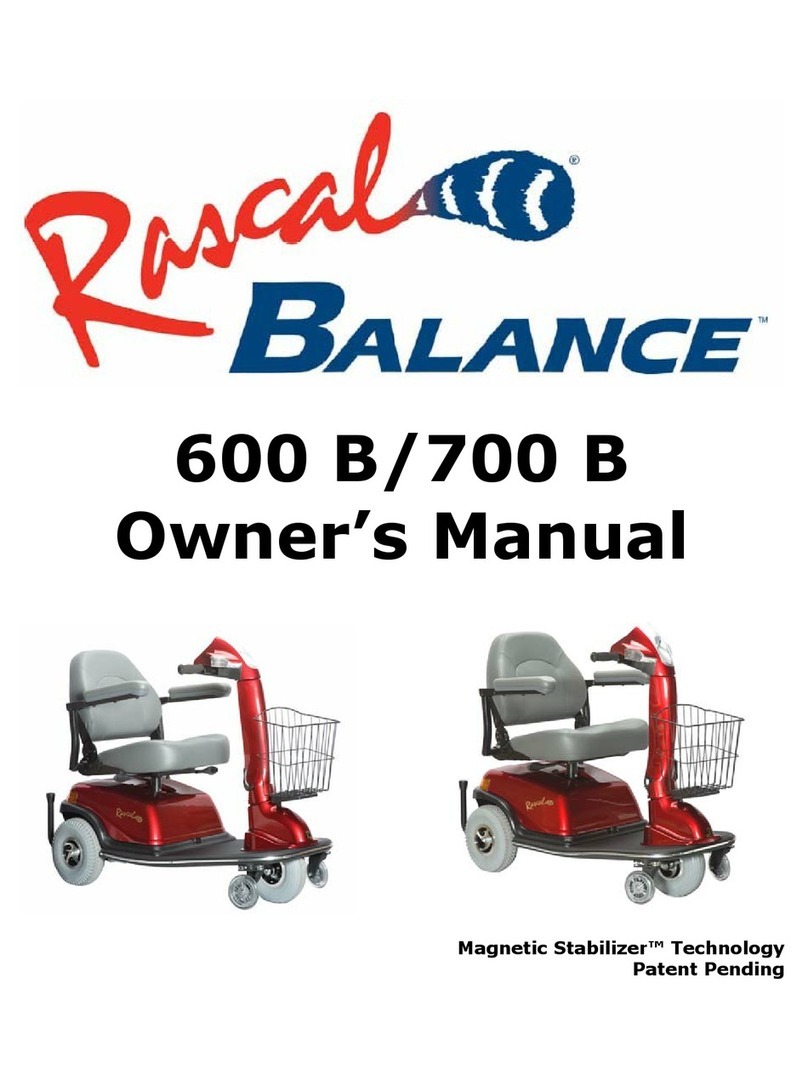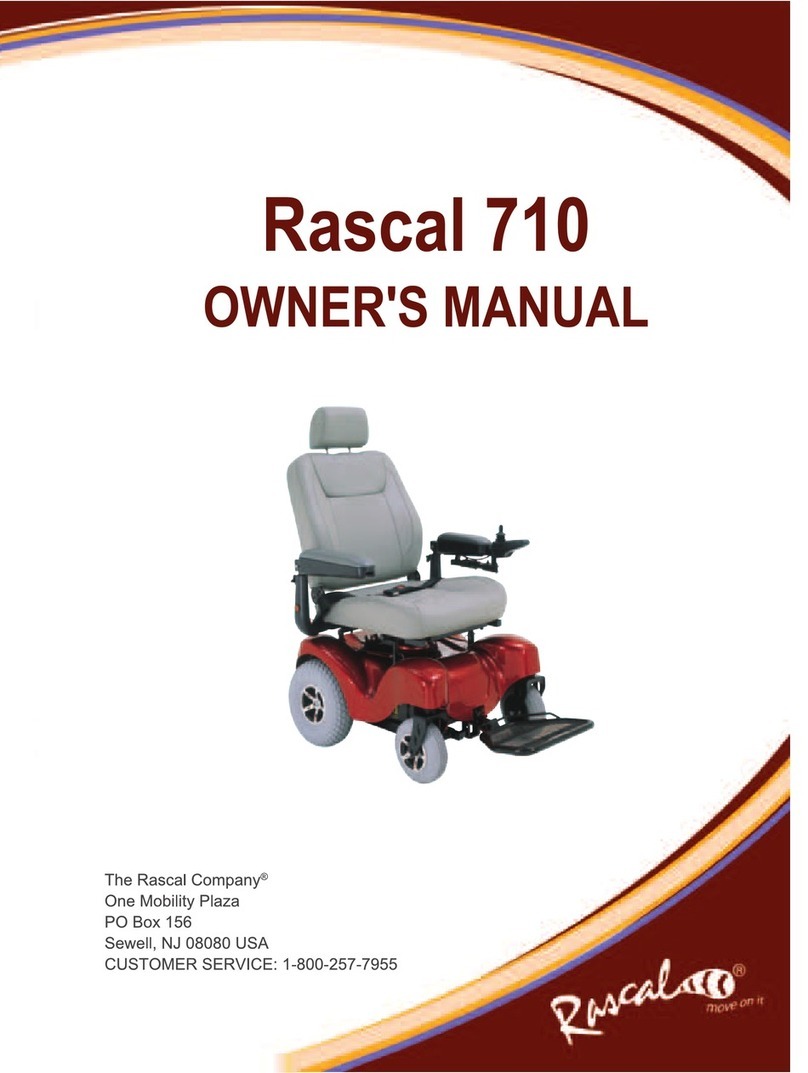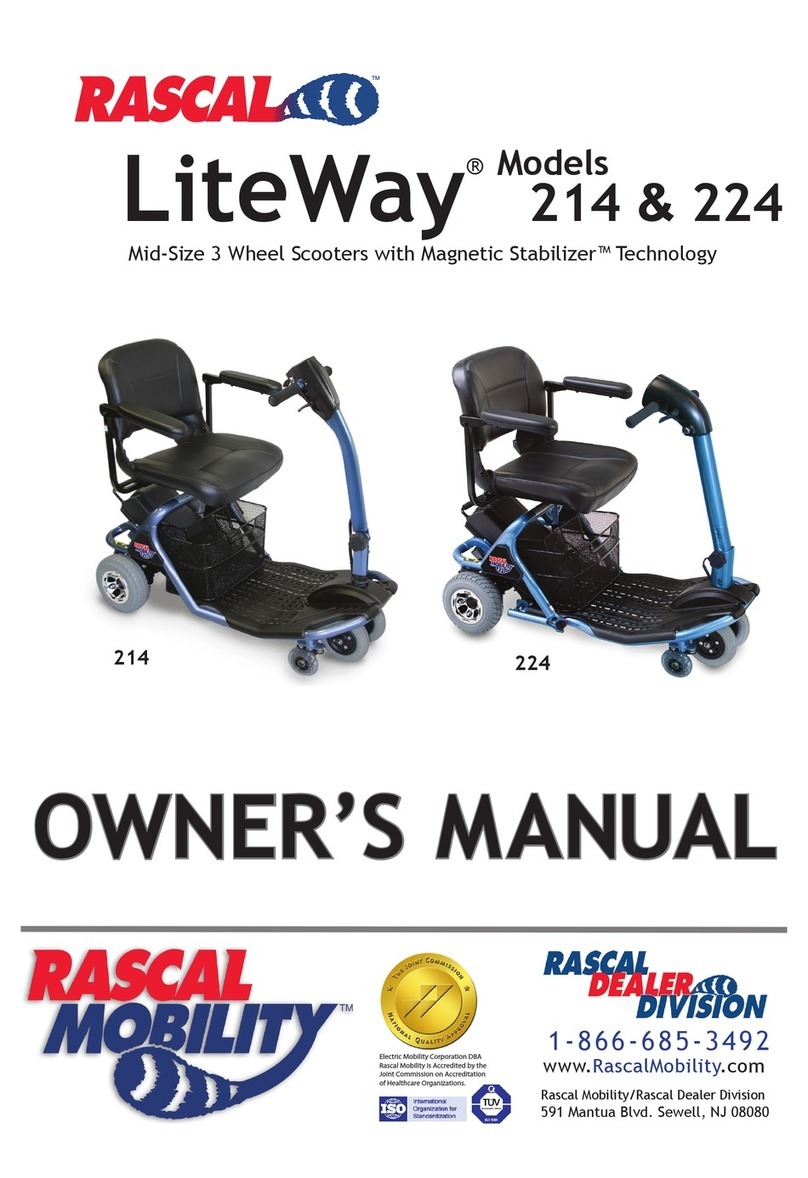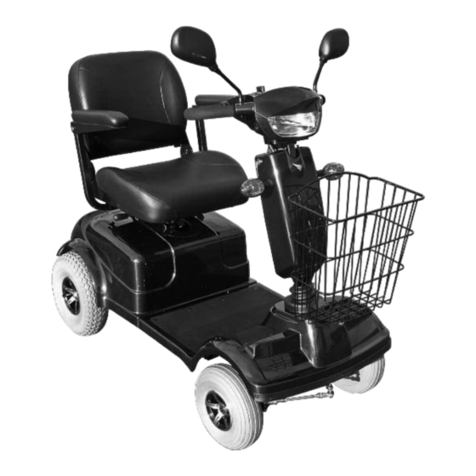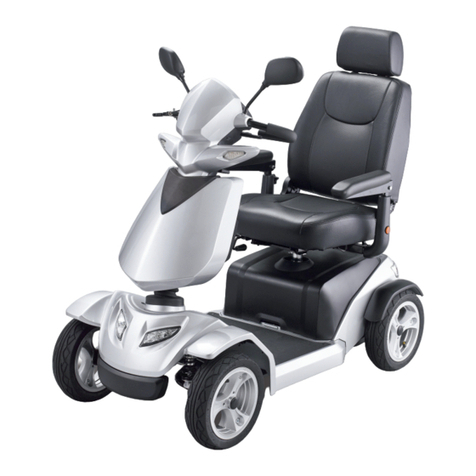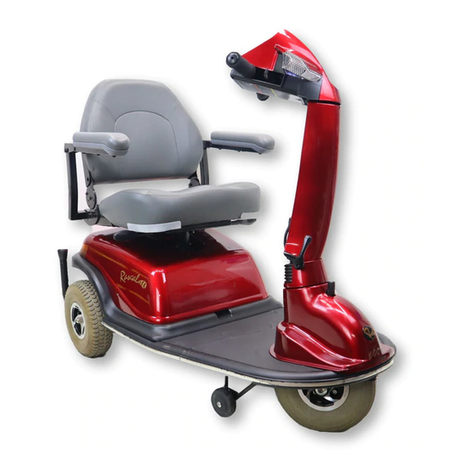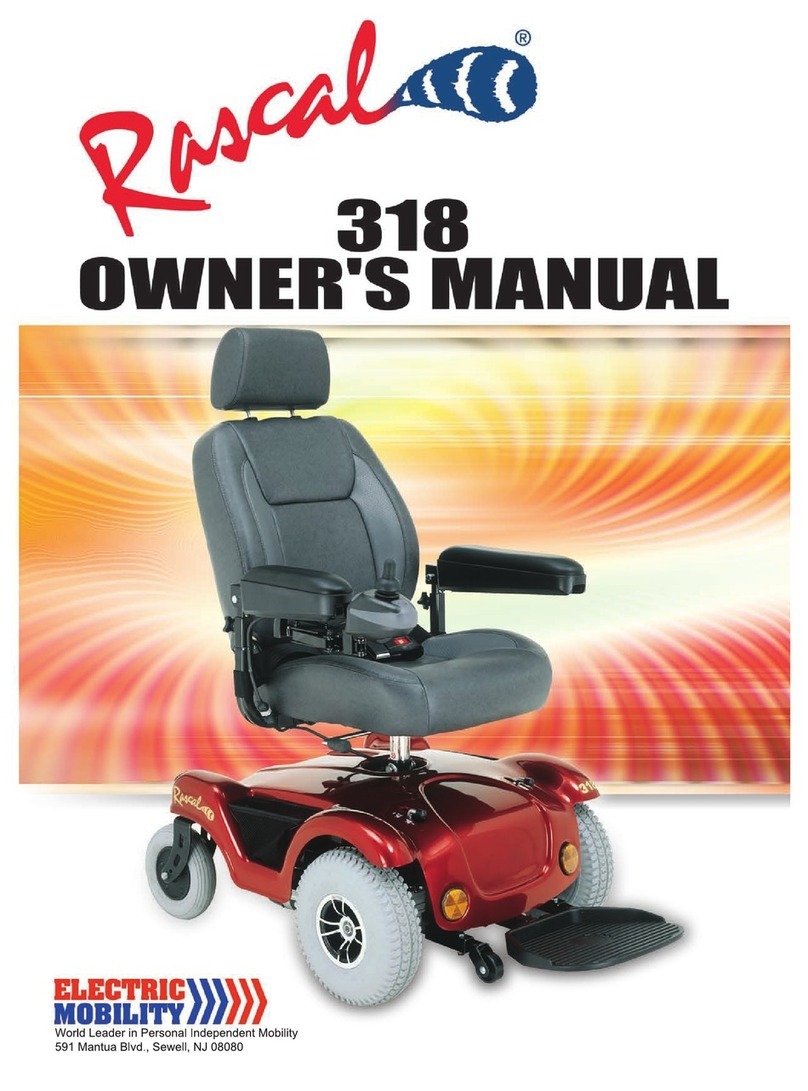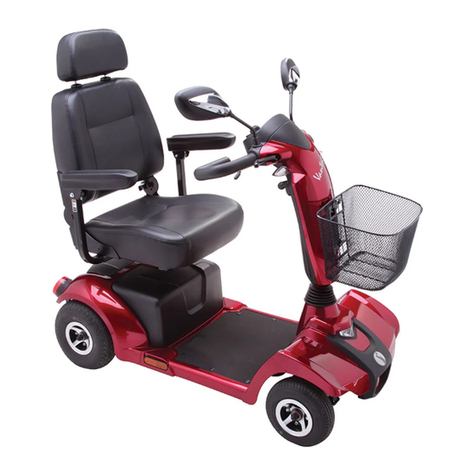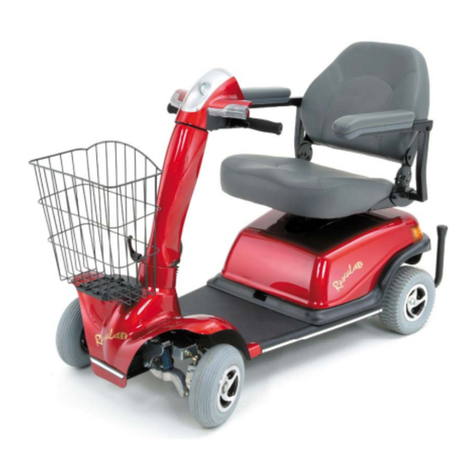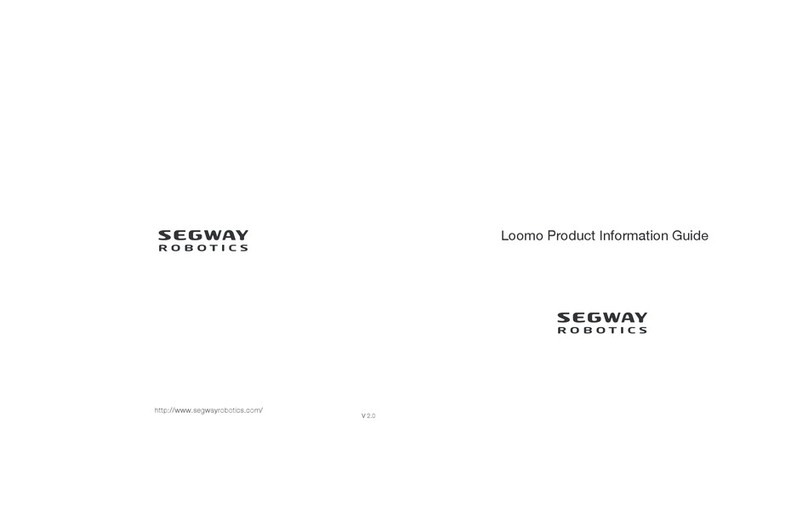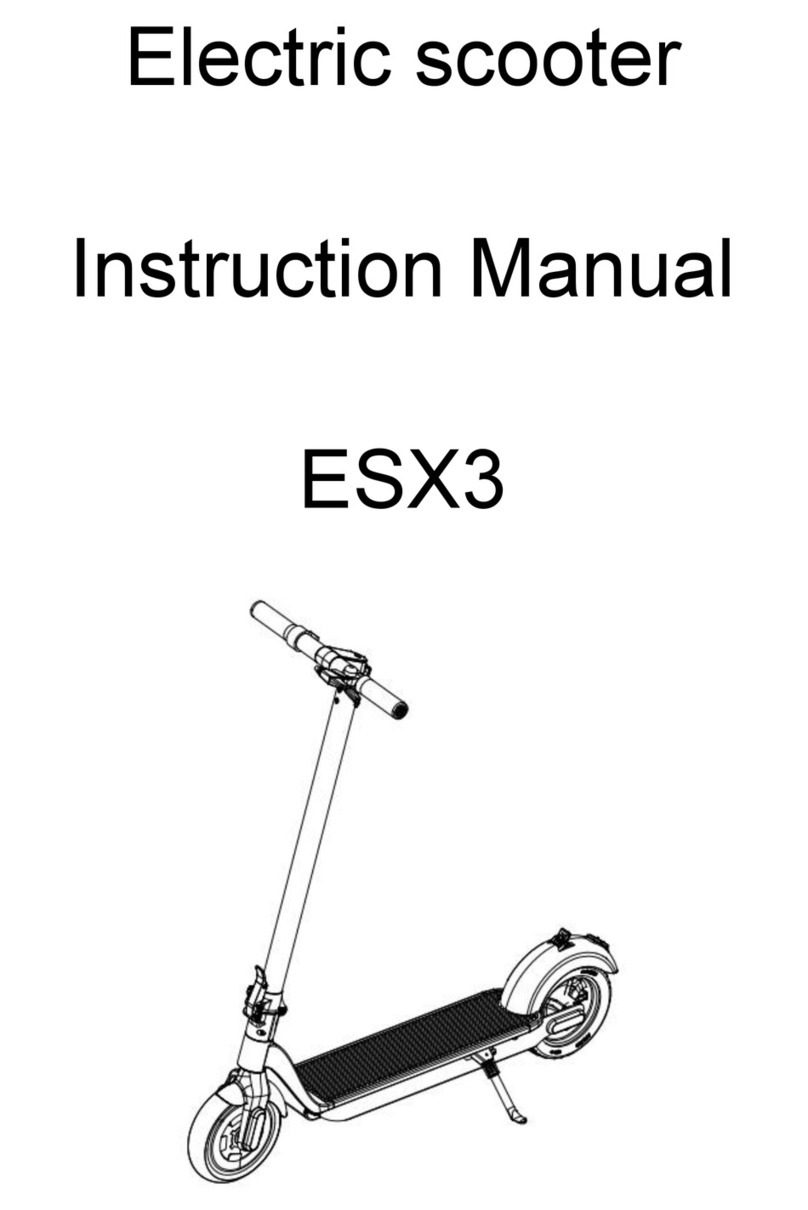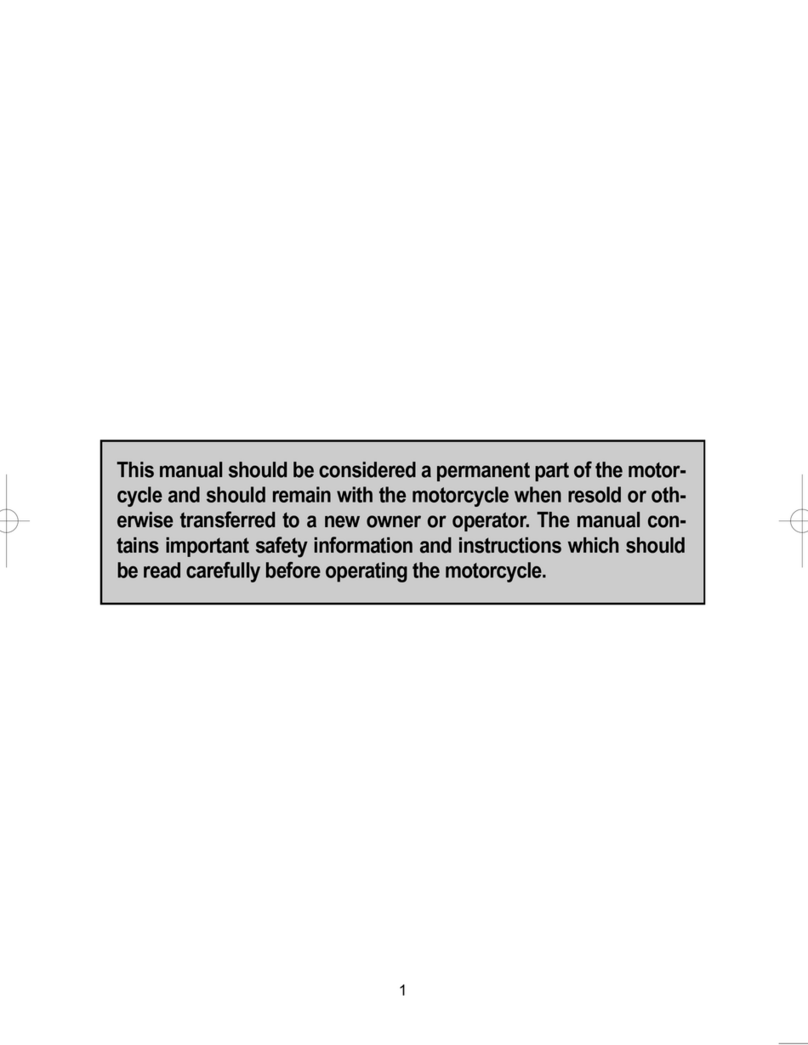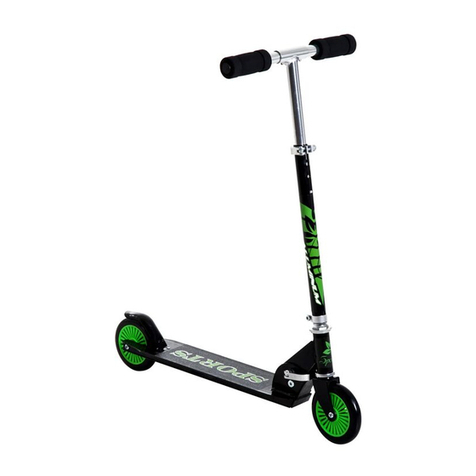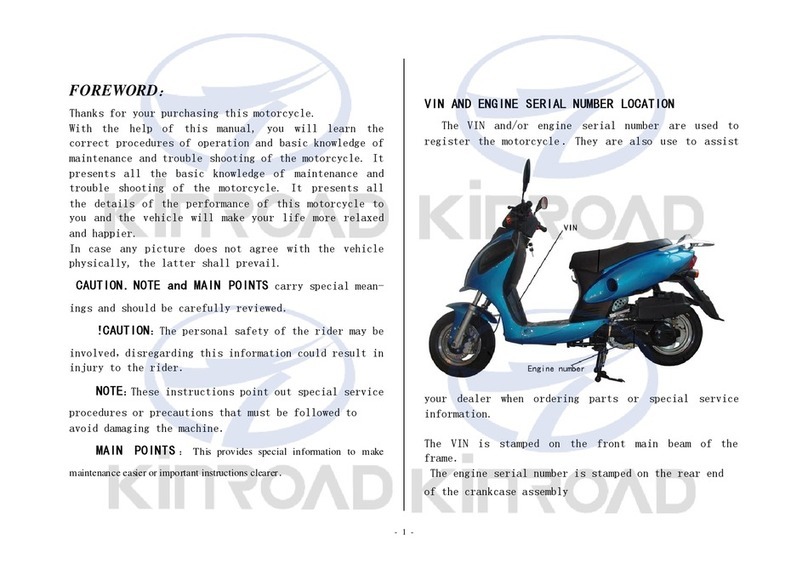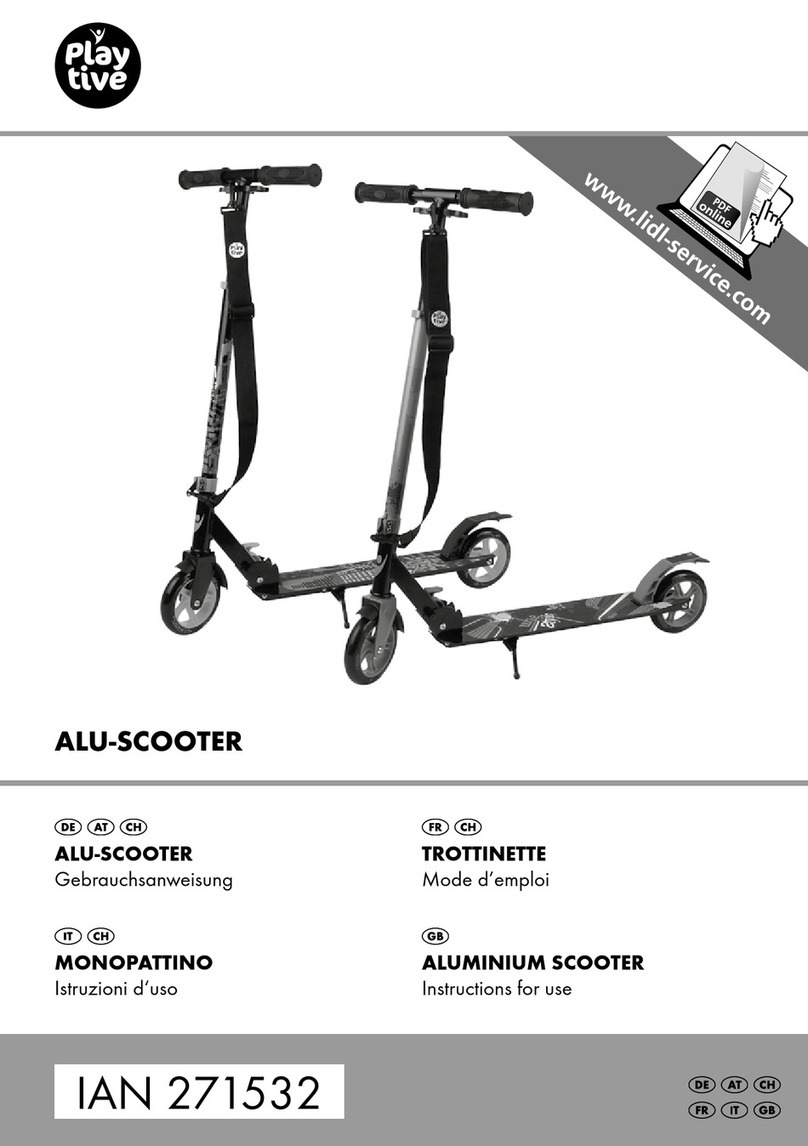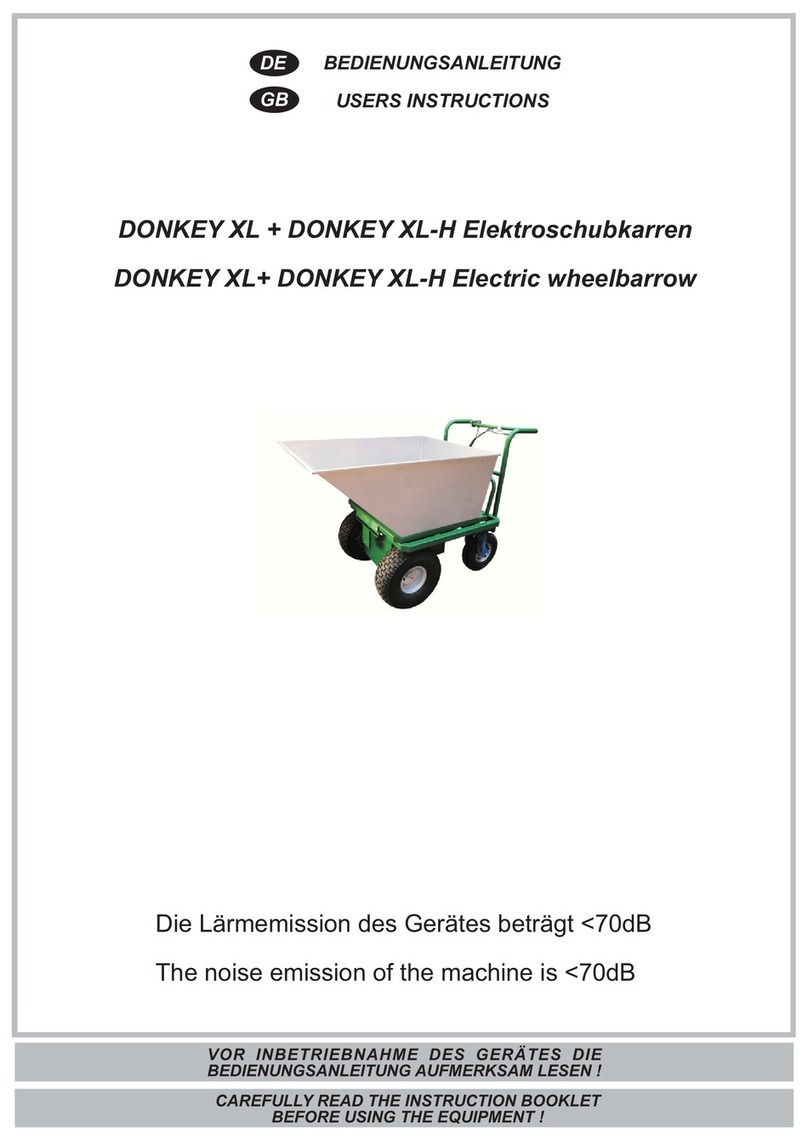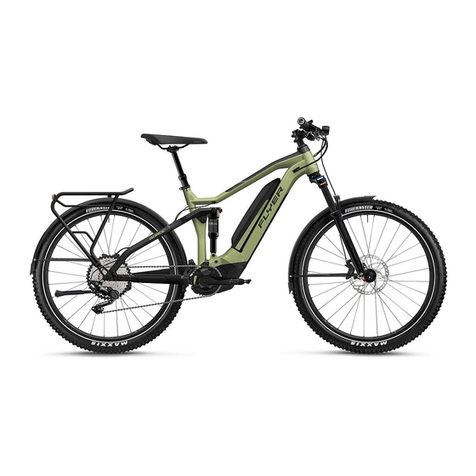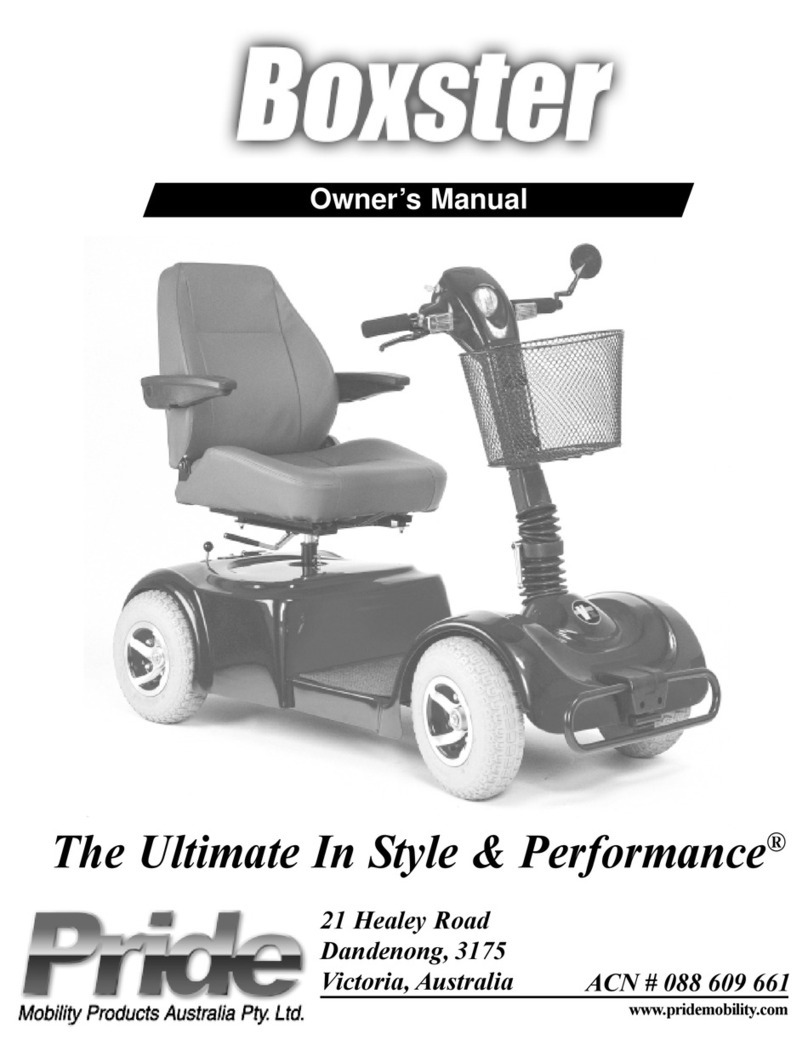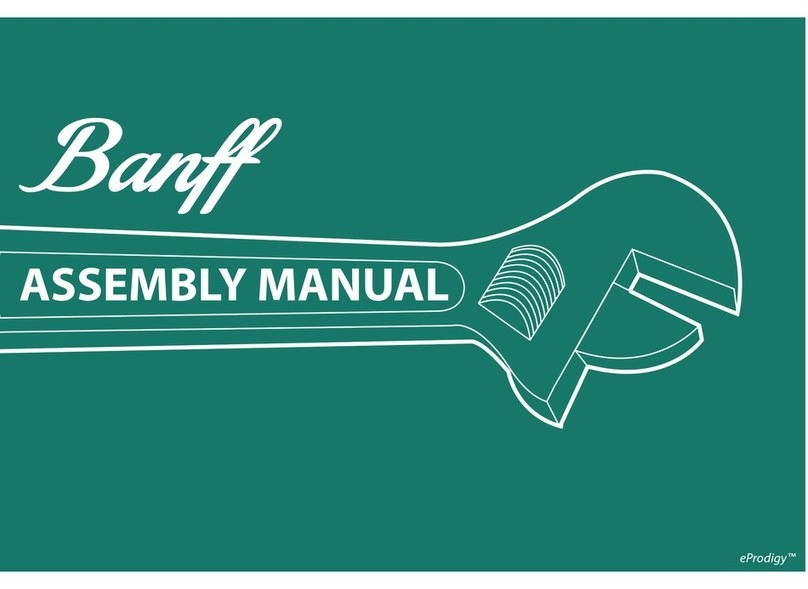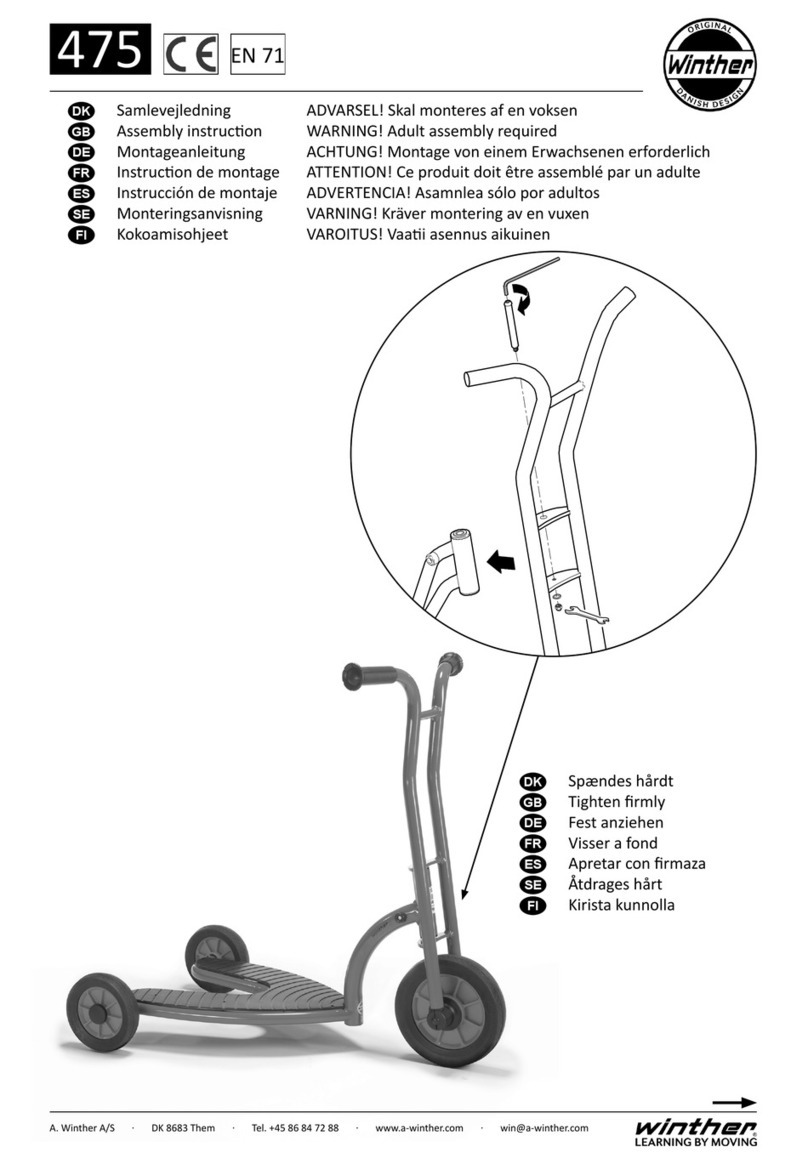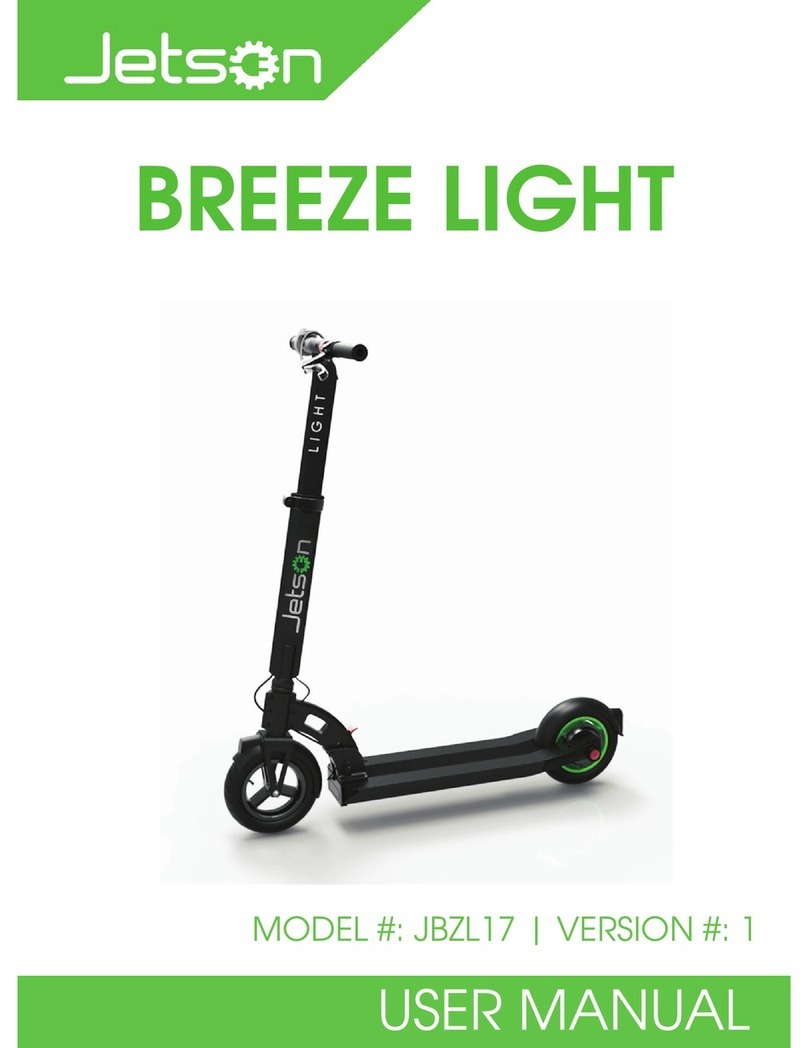
Warning: Entanglement. Do not wear clothing or
carry items on the scooter that could become
entangled in wheels or other moving parts whilst
operating the scooter. Severe injury may result.
Warning: Reversing. Always take particular care
when
reversing the scooter as injury to other
people may occur if safe distances are not
Warning: Battery Charge Level. Before driving
off, always check the
battery indicator. If you are in
any doubt, ensure all the batteries are fully
charged before starting on a journey.
Warning: Leaning Over. Do not lean sideways,
as this could cause the scooter to topple.
Warning: Castoring. Be aware that, if you set off
when the front wheels are not straight, the initial
movement could be partially sideways.
Warning: Escalators. Never drive the scooter
onto an escalator as this could cause the scooter
to top- ple and result in severe injury.
Warning: Power. Unless there is an emergency,
do not switch the power off when moving. The
Scooter may stop very suddenly. Release
forward
/ reverse control and the scooter will come
to a controlled stop.
Warning: Roads. This scooter is not designed or
compliant for use on public roads, apart from
cross--ing roads at designated places.
Warning: Driving in Poor Visibility. Scooters are
not
easily seen. Your scooter is not intended for
use in darkness or in poor visibility.
Warning: Slopes. On steep slopes the scooter
could topple over. Always try to avoid crossing a
slope. If you have to cross a slope, take great care
to avoid tipping. Never make sharp turns on
slopes. Never drive on slippery or icy slopes. -
you are not comfortable with
the hill gradient,
consider an alternative route. See “Driving Your
Vehicle” – Hazards for more advice.
Warning: Carrying Items. Do not carry or attach
anything to the handlebars or controls as this
could affect the driving safety.
Warning: Hot Surfaces. If the scooter is left out
in the sun, surfaces could
Always try to park the vehicle in the shade.
Warning: Kerbs. You should always try to avoid
driving up or down kerbs as this may cause the
scooter to topple. Use access ramps wherever
possible. Never attempt to climb or descend kerbs
greater than that noted in the Technical
Specific
ation. If you have to climb or descend a
low kerb, always tackle it straight on. See “Driving
Your Vehicle” – Hazards for more advice.
Warning: Seats in Vehicles. This scooter is not
suitable for use as a seat for an occupant when in
a motor vehicle.
Warning: Speed. Turning at maximum speed
might cause the scooter to topple over.
at maximum speed
and always reduce speed for
turns. Always slow down when amongst
pedestrians and ensure you do not run into them.
7
Warning: Stopping. If the scooter stops suddenly
when turning, it might topple. Try not to brake
when turning. Always take particular care
turning.
Warning: Entanglement. Whilst folding or un-
folding the scooter, be aware of potential trap
hazards of moving parts and components, being
loose clothing or other items.
Before folding or un-folding, refer to ”Folding
& Un-Folding The Scooter” section
manual and read thoroughly.
Attempting to folding and un-fold the scooter
outside those methods that are
described in
the instructions above could result in injury
and damage to the scooter.
